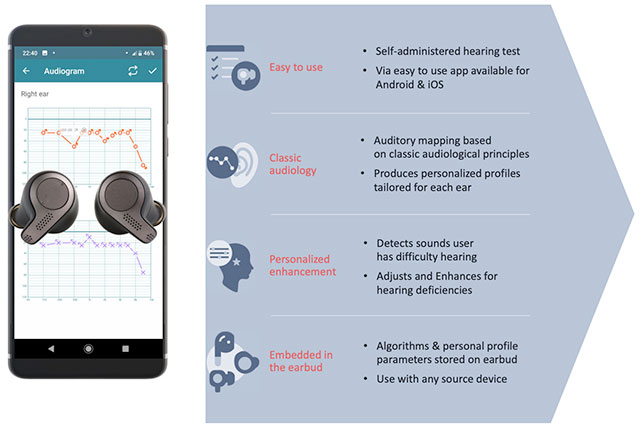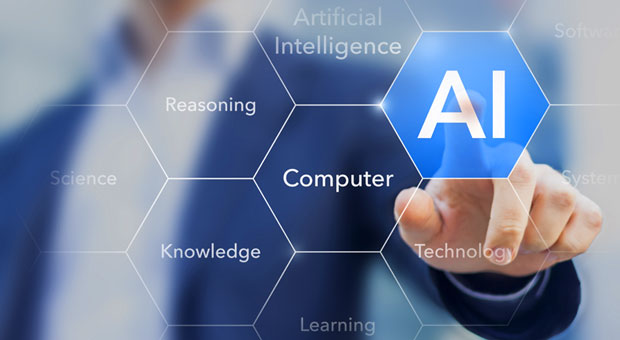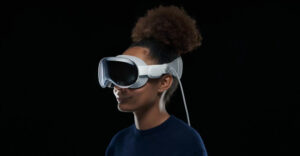Dell World was last week, and it sure was different this year because it was done virtually. One of the most interesting parts of Dell World is the session on the future. In past years they surfaced the coming of the Fourth Industrial Revolution and the coming wave of robotics.
This year, they spoke on a new branch of engineering that is solely AI-focused, the blended technology revolution surrounding food production, how AIs were intentionally corrupted, and how music, math, and the Internet create new entertainment types.
Let’s talk about that this week, and I’ll close with a product of the week that isn’t quite a product yet — a technology that will transform your earbuds into smart earbuds and potentially give you superpowers (well, one superpower anyway).
Genevieve Bell: The 3A Institute on AI
Genevieve Bell is one of my favorite people and an Intel Senior Fellow working out of their research organization. She opened this segment on the future, talking about a new effort she spearheads that pulls together many very different skills and people to create a new engineering-centric branch solely focused on artificial intelligence. I say engineering-centric because the folks involved come from a broad spectrum of backgrounds and skills that include engineers as well as anthropologists, scientists, policy experts, and even musicians.
Unlike most other efforts that seem to focus more on the technology, Genevieve begins with studies on the history of cybernetics going back to the conferences in the 1940s and 1950s that initially defined the space. For instance, in Australia, where the effort is based, they studied the aboriginal fish traps, which were useful in the early parts of the last century and successfully performed for centuries before that for guidance.
This course of study focuses more on asking questions than on problem-solving. Often, jumping into problem-solving forces people into a tactical approach without appreciating either the problem’s full scope or the related dependencies. It can conceal potential collateral damage from the resulting solution. Focusing on questions first helps ensure the problem is fully defined, creating a pathway to a more comprehensive and arguably safer solution.
The six core questions they ask about their AI efforts are:
- Autonomy: Or whether the system can perform without user intervention. Does it automatically do what is intended?
- Agency: Whether the output of the system is constrained to an area of defined performance. Does it just do what is intended, or will it exceed its intended parameters to do unintended things?
- Assurance: This is a quality metric assuring the result is secure, and safe, you can trust it, it complies with the laws that surround it, it is well regulated, and it does what was intended.
- Interfaces: How does the AI communicate and interact with the world, people, and other systems? Does it interrelate and communicate both effectively and optimally?
- Indicators: How do you monitor the thing? What is the external mechanism to ensure the system doesn’t go rogue?
- Intent: What is, was the intent of the designers, what did they want to accomplish, and does the result comply with the intent of those that created it?
(It strikes me that if the folks that created Skynet had followed these elements, the Terminator movies would have been very different.)
This group launched a master’s program, and currently, students from all over the world have enrolled in it. In the end, it is this effort, and those like it, that will help assure that the AIs of tomorrow don’t make “Terminator” unfortunately prophetic.
Amanda Little: Creating a Blended Agricultural Future
Amanda Little was next up, and she spoke about the problems we face today with food. Thanks to the pandemic, not only are farms throwing out massive amounts of food; people are starving because they can’t get food. Getting discarded food to people in a timely manner during the pandemic has become a significant problem, with crops rotting in the fields and food banks complaining of extreme shortages.
One of the problems is that farming appears to be bifurcated between those that want to push technology that may not be safe and those that want to go back to traditional farming, which doesn’t scale. Amanda argued that what we need is a blend of both so that the weed killers and pesticides stay out of our food sources but where we use advanced technologies to increase yield. She has written an exciting book on the topic called “The Fate Of Food.”
Amanda’s research has taken her across the U.S. and to 15 countries to look at modern and ancient farming methods — and concluded that food is ripe for reinvention. Huge investments are being made in automated and industrializing farming: From warehouse farms that provide higher yield with lower use of resources that reduce, if not eliminate, the need for pesticides and weed killers; to robotic farming equipment that provides micro-doses of fertilizer, weed killer, and insecticide which doesn’t contaminate the land and the food.
She concluded, after talking about the advancements and increased acceptance of artificial meat and the efforts to grow the parts of an animal we’ll eat — that the best solutions combine old and new farming technologies into something safer, better, and far more interesting.
Mainak Mazumdar: Corrupting AI
Mainak Mazumdar, the Chief Research Officer for Neilson, spoke to data corruption that assures that future AIs will be untrustworthy if these bad practices aren’t addressed. The old term “garbage in, garbage out” applies here. He used the early facial recognition failures where people of color were miss categorized by facial recognition systems as an example. He also pointed to practices like those used by the U.S. government to limit census activity as efforts to corrupt the data-gathering process and, in turn, harm minorities and others that aren’t counted yet, needing to consume government resources.
Mainak shared that they learned a lot by taking their surveys in India to rural areas and small mom-and-pop stores to understand what was truly going on in India; and surveying distressed areas in the U.S. to understand better how to market to, and reach, the related demographics.
In the end, however, his message was clear. We are doing AI backward; we should first focus on ensuring the data — then create AIs that can make decisions on the data. If we do this backward, we’ll end up with corrupt AIs that don’t perform as intended and could be very dangerous.
Paul D. Miller aka DJ Spooky: Patterns Matter
The session closed with the shortest and one of the most fascinating talks. Electronic and experimental hip-hop musician Paul D. Miller spoke about why patterns matter and the confluence of technology and entertainment.
Now, my B.S. meter flashed red because I expected another guy who’d learned buzzwords but didn’t have a clue about the subject. That wasn’t at all what happened; he knew his stuff and walked through a series of examples of how understanding patterns could help developers wed their code with their audience’s culture. Paul’s was the most fascinating of the presentations because he was presented as the least technical speaker, but his talk arguably had the most technical content.
He talked about music as data sets and how past composers had taken things like beautiful architecture and translated the related math into beautiful music. His session closed with a beautiful example of his art, which blended the Bill of Human Rights with Internet technology to create Quantopia.
There is an element that borders on the concept of magic, being that unknown quantity that connects code, physical objects, and perception that I’ll be thinking about for some time.
Wrapping Up
We are truly entering the Fourth Industrial Revolution, and we aren’t ready. But people like Genevieve Bell, Amanda Little, Mainak Mazumdar, and DJ Spooky (I love that name) are working to ensure that this revolution’s outcome will be beneficial to the human race and not make the Terminator franchise prophetic.
AIs that are smarter and unbiased, food that is prevalent and safe to eat even after the dire impact of climate change, and maybe the foundation for a more profound blend of code and reality that I still think could evolve into magic, are in our future if we listen to people like this. The future is coming whether we are ready or not. These folks are working on our behalf to make sure we are ready.
Thanks to Paul, Mainak, Amanda, and the fantastic Genevieve Bell for helping to prepare the world for some powerful coming transitions that we otherwise might not survive as a race.

Qualcomm and Jacoti Create Smart Earbuds
Intel first showcased part of this concept years ago at IDF, but they focused, I think, on the wrong part and then didn’t market the result, which failed in the market. Their idea, which honestly was before folks were ready for it, was to use the earbud to pick up biometric information for exercise and health. The ear is a far more stable place to monitor things like a pulse.
But what makes this Qualcomm Jocoti effort more interesting is that they focused first on improving hearing, which is a critical need for a considerable portion of the population. Years ago, I bought some tactical ear protectors when I competed in combat shooting, and they were a godsend. They enhanced the sounds around you so you could hear the judge (or threats if you were in the field) but protected your hearing from the sound of the shot.
The new earbuds that will be created later this year from this joint effort will significantly enhance the sound you hear from your digital sources and the sound around you to hear every place better. As we get older, our hearing degrades, and we fill our conversations with brilliant comebacks like “huh” and ask our significant others to tell us what the folks on the TV said (to the annoyance of our significant others who are trying to watch the show and hear what comes next).
These earbuds will address that problem and provide a rich set of biometric data for us using them while we exercise or just to monitor our health and well-being. Given that the sensor location is superior to smartwatches, the result should be far more accurate. These earbuds are contextually aware and will automatically switch modes to assist those that need help.

One exciting aspect is that when you first get them, they will run a hearing test and then tune the earbuds to your specific needs. This capability should provide a far better experience, whether you listen to music or what folks are saying at the table next to you.
I refer to this ability to hear better as a superpower because both Superman and the Vampires in “The Vampire Diaries” have similar capabilities. I love technology that enhances me, and thus this new jointly developed effort by Jacoti and Qualcomm is my technology (product) of the week!
























































"AI" does not exist, nothing more than algorythms idiots feed with social media and the cloud. Why do you keep pushing this rubbish?